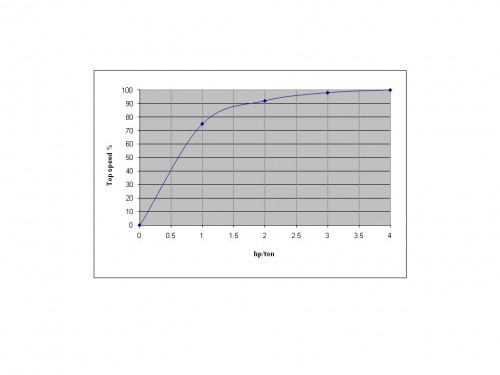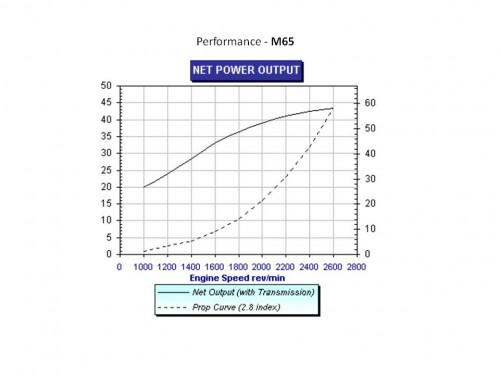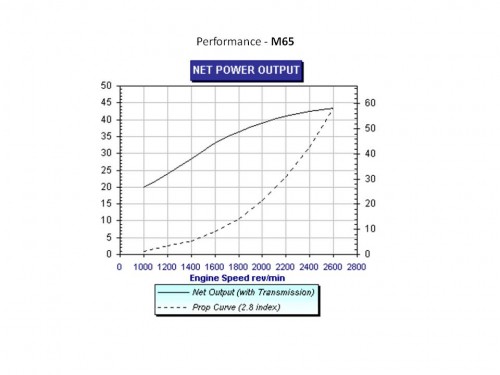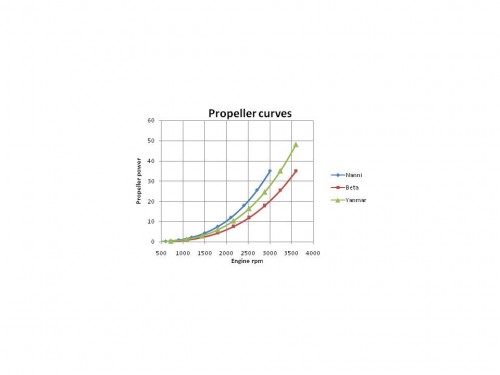Do you want to be informed on new Posts on this Thread? (members only)
| S&S Swan Maintenance - Potential engine replacement for a Swan 41 |
|---|
|
Join Date: 04 March 2007
Posts: 41 |
||
|---|---|---|
|
For the moment I have opted to keep my Perkins 4.108 but it leaks a lot of oil, needs repair and makes a racket. I don't use it much and it has enough power when I do, but the day will come...
|
|
Join Date: 03 March 2007
Posts: 241 |
||
|---|---|---|
|
This is a really interesting thread!! Thanks to Matteo et al for the Web site so we can have discussions like this!! Hopefully it helps Christophe make the "right" decision if there is such a thing. Anyway, not surprisingly the discussion is a little confusing but with two clear approaches put forward. Staying with the original HP as deterimined by the experts Sparkman Stevens and an approach supported by our experts the Professor and Rodrigo or going the more HP route. I have been in this situation myself ( pre this forum) and replaced the Perkins 4107 (not the original motor) with a Vetus 3.10 (22 HP). This was a) close to the original HP spec by S&S b) is light ( I can pick it up with the boom and mainsheet) and has resulted in raising of the water line c) is very fuel effiecient ( important when one is offshore and using it to charge batteries. I originally installed a 3 blade fixed prop (15") from Vetus. I tried a couple of props before settling on the pitch. The first one suggested by Vetus had me over proped. The engine could not get up to revs. I ended up with one with less pitch and motored happily along max speed about 6.4 kts usually about 5.5. BUT The drag created by the fixed blade prop has resulted in my shifting to a Kiwi feathering prop. (adjustable pitch). more to come on this as I guess we will probably get into a prop discussion. Anyway, while talking to prop sales folks I had a few that said I was underpowered but mostly the suppliers suggested props matched to the engine and boat. see my Vetus comment. The Kiwi guys who are excellent by the way said " this is the pitch we suggest but you should play with it to get it right. Yes, some experts in the prop field are willing to say they don't have the absolute. Not surprising as the prop resides in a complex flow environment, with turbulence from the strut, keel, waves.... this is not something one can model so educated guestimates are the reality for props. Question did any of your prop guys ask about keel shape, distance to the strut, hull shape. These are all issues that influence the flow field the prop experiences.. lets see standard metrics asked for are HPat RPM, weight, waterline, draft, beam and presto there is your prop sir .... Anyway, I am way off on a tangent. Clearly you/we are limited in prop diameter and this and the pitch determine how much power from the engine is transfered to moving the boat. The Prof has given you the numbers needed to drive your boat... I to be honest was surprised at how little it takes making me feel like I am not underpowered . With a bigger engine and prop ( no space) I might be able to hit hull speed but this would cost extra> initial outlay ( those big engines cost more and I suspect this is why the engine suppliers suggest the next size up) > fuel ( we don't have a of tankage)and maintence costs. Another Issue. Diesel engines need to work!! Ask any engine man. Not working a diesel kills it. So a big engine attached to a small prop so that it is not loaded will suffer carbon build up "so I have been told" and significantly reduce the life of engine. see maintence costs. Confusing right? Who to listen to in this game. I trust the guys who are experts in the field with nothing to gain... That would be S&S who originally speced the engine and prop, the professor and Rodrigo(definately not me!!!). Forget the engine guys for now. Following our unbiased experts advice you should probably be looking for an engine under 40HP. Ideally it should fit on the existing engine bed. Personally I would be going for an adjustable pitch prop to transfer the power, see above. Note: Many of the engines you have mentioned are built on the same block... my Vetus is a Mitubishi which is used by other manufactorers as well. The extra price is in the quality of the bits. pump alternator.. heat exchangers etc. For me, availability of parts in remote places was the key. Finally to me it is the journey not the destination, I don't mind being a little later so a smaller engine is not an issue. Enjoy the trip. Thats my 2 cents.
Mike
|
|
Join Date: 02 January 2008
Posts: 1547 |
||
|---|---|---|
|
I have a feeling that a contribution is expected from my side on this subject. Here two diagrams for your consideration. The first shows the approximate top speed to expect in calm water depending on engine hp per ton displacement. These are average values, and they do not reflect the rather big variations that can occur in propulsion efficiency, but the point is that above 2 hp/ton there is very little increase in top speed. This is based on technical facts, but sales talk now tends to imply that 6 hp/ton is a bare minimum. The second diagram shows the performance for John's engine, the Perkins M65. This engine is marketed as a 65 hp unit, but the net power output is about 58 hp at 2600 rpm. The propeller curve is of particular interest, it shows the power absorbed by the propeller at various rpms. Note that the curve is far below the engine output except near the maximum rpm. A fixed pitch propeller behaves like this, a saying is that the Propeller Law rules. Controllable pitch propellers are an exception, but are mostly installed on big yachts. John reported that he cruises at 1800 rpm, the propeller curve shows that 15 hp is used. If you are making a choice between engines having different rpms and power it is suggested that you plot their propeller curves on the same diagram, this will provide some interesting observations. If you would like to see comments about propeller types pls let me know Kind regards Lars   |
|
Join Date: 02 January 2008
Posts: 1547 |
||
|---|---|---|
|
Here the diagrams hopefully in bigger size. If this works the small ones could be removed. Lars   |
|
Join Date: 02 January 2008
Posts: 1547 |
||
|---|---|---|
|
Continuing the series of tiny diagrams, attached two propeller curves for your consideration. Nanni N4.38 and Beta 38 are shown in order to demonstrate the influence of the maximum rpm, 3000 versus 3600, on the output at cruising rpms. There is a difference over the whole rpm range due to this, and this difference can not be affected by a change of reduction ratio. For example cruising at 15 hp requires 2250 rpm with Nanni, and 500 rpm more with Beta. The Propeller Law says that an engine with high maximum rpm does not provide good cruising speeds at low rpms. Lars  |
|
Join Date: 04 March 2007
Posts: 41 |
||
|---|---|---|
|
Lars, can you put the Perkins 4108 (with a Gori 3 blade folding prop) on the diagrams for comparison. What do you think of the Yanmar? a presto Pippo |
|
Join Date: 02 January 2008
Posts: 1547 |
||
|---|---|---|
|
Pippo Assuming that the Perkins uses the 37hp/3000 rpm rating this is more or less identical with the Yanmar 3JH4E rating, and both are so close to the Nanni propeller curve that there is no reason to add another curve. Lars |
|
Join Date: 16 May 2009
Posts: 252 |
||
|---|---|---|
|
As part of an up-grading programm and as many other old S&S Swan owners I am considering changing the 4.108 Perkins, which is leaking oil. I am being offered to replace it with a Nanni 60HP as it sounds to be the engine that requires the least modifications to the existing surroundings. Does this sound right to people familiar with the matter? What feedback could be provided to me on Nanni engines. Are they reliable? Efficient? Is it easy to find spare parts in The Atlantic and in the Mediterranean sea? Are there less noisy than the 4.108 Perkins? Is there any usefull tips I should be aware of before making any decision? Any input would be greatly appreciated. Many thanks in advance. For what it is worth, the following gear was put new into my boat just before I bought her: Yanmar 4JHTE 48 hp engine, w/90 amp Powerline alternator, driving a 3 blade 18” VP MaxProp.
|
|
Join Date: 02 January 2008
Posts: 1547 |
||
|---|---|---|
|
Geoff Added your propeller curve to the diagram, assuming that the engine produces 48 hp/3600 rpm. Your curve is halfway between the two earlier ones What rpms do you use for cruising at 6 knots? Lars
 |
|
Join Date: 16 May 2009
Posts: 252 |
||
|---|---|---|
|
Geoff Added your propeller curve to the diagram, assuming that the engine produces 48 hp/3600 rpm. Your curve is halfway between the two earlier ones What rpms do you use for cruising at 6 knots? Lars
Lars
|
|
Join Date: 27 August 2009
Posts: 44 |
||
|---|---|---|
|
All, I am starting to learn a lot which is great. I am impressed by the quality of the information provided. Many thanks to you all. I have just signed-off on ordering a 50HP Nanni engine following the Professor's recommandations, especially on HP and the necessary analysis between HP, gear / reduction, shaft and propeller. It doesn't have a turbo (hence it is more simple), the existing shaft can be kept and price is lower... For the propeller I have been more hesitant between Flexofold 3 blades and Maxprop 3 blades. I have finally opted for a Maxprop 3 blades, the main reasons being that (i) power is greater going in reverse, (ii) Maxprop is highly robust. For those who are interested I have found an interesting article which compares 15 propellers, published in May 2009 in Yachting Monthly which can be found on the web site of Flexofold - www.flexofold.com Antares should be back in water late July and I'd be happy to report my findings once under sail if this is of any interest to you. Regards. Christophe |
|
Join Date: 02 February 2007
Posts: 202 |
||
|---|---|---|
|
Christophe, we had the same problem with ou 41/022 and finally went for a rebuilt 4108. I must say we are happy with it, and it goes nicely but with some noise of course, but no oil leak, or oil consumption.... We thought that changing to a more moder engine (we looked at Yanmar) was to expensive and complicated: engine bed, exhaust system, transmission, engine instruments and wiring, etc... that's a lot to modify. May I suggest that you contact "La salle des moteurs" in Cannes: 158 av Michel Jourdan, 06150 Cannes La Bocca; Phone: 04 93 90 62 94.... if replacing your engine for a rebuilt 4108 is still an option. The list price for a rebuilt engine is 4664 Euros on their website. They seem to hold spare parts as well without problem. Kind regards. Philippe |
|
Join Date: 01 February 2007
Posts: 234 |
||
|---|---|---|
|
All Checked my fuel consumption log and at 1800 revs it is 2.5 litres per hour not the 3.5 as previously indicated. That gives me 48 hours at 6 knots. Remember that the 411 is much heavier than a 41 or a 40 John B |
|
Join Date: 30 January 2007
Posts: 461 |
||
|---|---|---|
|
John, |
|
Join Date: 02 June 2007
Posts: 43 |
||
|---|---|---|
|
Christophe; It may be too late but here you are: I replaced my Perkins 4.108 with a Volvo-Penta D2-55 (4 cylinder 55 hp, non-turbo) I rebuilt the Borg-Warner (It's rated for 235 hp) Had the shaft straightened and balanced. Kept the 3 blade/17" Maxprop (adjusted pitch to 26 degrees) Changed to wet exhaust (waterlift) moved discharge to counter near the transom New engine instruments and controls, new wiring. Rated engine RPM is 3000. I use 2250 rpm (75%) for max cruise (5.5 l/hr) at 6.3 knots. Mid cruise 1750 rpm, 2.8 l/hr at 5.25 kts Long range cruise at 1500 rpm yields 4.5 knots at 2.25 l/hr The engine, exhaust and gearbox are very quiet. No modifications to engine compartment. I am satisfied with the choices. John
.jpg) |
|
Join Date: 24 August 2013
Posts: 13 |
||
|---|---|---|
|
Hi dear Swan 41 owners
I would be interested in which engine you have used to replace Perkins 4108 and how you have solved the exhaust.
I'm currently using Yanmar 4JH4E.
Kind regards, V-V 41-017 |
|
Join Date: 15 April 2011
Posts: 393 |
||
|---|---|---|
|
Dear V V, I cannot answer your question directly because I still have my Perkins 4.108. However, with the Professor's help, I have made, am making changes. For the oil leak: replaced rear main oil seal and oil pan gaskets Replaced the wiring harness and panel swapped a relatively low reduction ratio transmission for a 2.57 to 1 ratio replaced 2-blade prop with 3-blade flexofold prop (calculations by the Professor) Water lift muffler was already in place I like the 4.108 for many reasons: natural aspiration; parts are easily found anywhere; simple to work on myself; robust; rebuild is easy or cheap after 10,000 or more hours; c-class diesel. my machine shop suggested a rebuild estimate of $2000.
Fair winds, Chris Mabel's Casse Tete 43/003 |
|
Join Date: 24 January 2012
Posts: 1 |
||
|---|---|---|
|
Dear Professor,
As our 4.108 is noisy, leaks some oil and the gearbox has serious problems we are considering installation of a Yanmar 4JH5E, with maximum output at crankshaft of 53 hp at 3000 rpm. This engine is in common use in New Zealand with good technical support. Our yacht is Nanea, 44/74.
As the Yanmar is slightly more powerful than the Perkins I am considering changing the 2 blade Max prop for a 3 blade model. I am not sure of the diameter of the current prop but think it may be 17 inches. I note that a contributor on the thread has put on a 3 blade Max prop. and is happy with the choice (with a Volvo 55 hp).
I would welcomem your comments on these plans.
With kind regards, Richard |
|
Join Date: 02 January 2008
Posts: 1547 |
||
|---|---|---|
|
Dear Richard The original propeller diameter has been 17", but it would be advisable here to increase the diameter for better thrust. This reduces the propeller clearance against the hull, the risk is that this will cause noise at high rpms.
Suggest you try with 1" clearance, pls let me know which diameter this allows. A recommendation can then be given for the reduction ratio.
Does Nanea have a NZ sail number?
Kind regards
Lars
|
- Threads : 1702
- Posts : 10217
- Members: 820
- Online Members: 0

